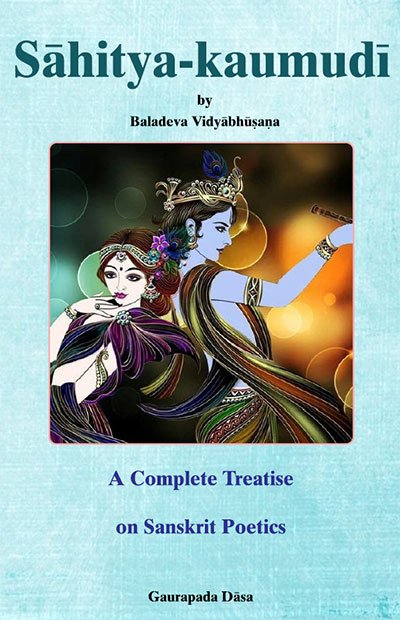Sahitya-kaumudi by Baladeva Vidyabhushana
by Gaurapada Dāsa | 2015 | 234,703 words
Baladeva Vidyabhusana’s Sahitya-kaumudi covers all aspects of poetical theory except the topic of dramaturgy. All the definitions of poetical concepts are taken from Mammata’s Kavya-prakasha, the most authoritative work on Sanskrit poetical rhetoric. Baladeva Vidyabhushana added the eleventh chapter, where he expounds additional ornaments from Visv...
Text 9.24
रोषेण शश्वन् न हि नागरी गरी-
यसा कठोरत्वम् उपेत्य भात्य् अभा ।
विहाय मानं हरिम् आनयानया
धिया हि सर्वं भवतीहितं हितम् ॥
roṣeṇa śaśvan na hi nāgarī garī-
yasā kaṭhoratvam upetya bhāty abhā |
vihāya mānaṃ harim ānayānayā
dhiyā hi sarvaṃ bhavatīhitaṃ hitam ||
roṣeṇa—anger; śaśvat—continuous; na—no; hi—because; nāgarī—female lover; garīyasā—on account of great; kaṭhoratvam—hard-heartedness; upetya—after attaining; bhāti—shines; abhā—She who has no luster; vihāya—after abandoning; mānam—pique; harim—Hari; ānaya—bring; anayā—with this; dhiyā—intention (design); hi—only; sarvam—everything; bhavati—is (i.e. will become); īhitam—desired; hitam—and beneficial.
No lusterless ladylove has ever become resplendent by being hard-hearted and continuously angry. Therefore let go of Your pique and bring Hari close to You. Everything coveted and beneficial will happen simply by this process. (Alaṅkāra-kaustubha 7.59)
Commentary:
A yamaka occurs in hitaṃ hitam although there is no anusvāra in the second word because in high-class poetry sometimes the rules are bent so that the letter m at the end of a line has the force of an anusvāra. The verse is Kavikarṇapūra’s example of anta-yamaka (a yamaka at the end of each line).
